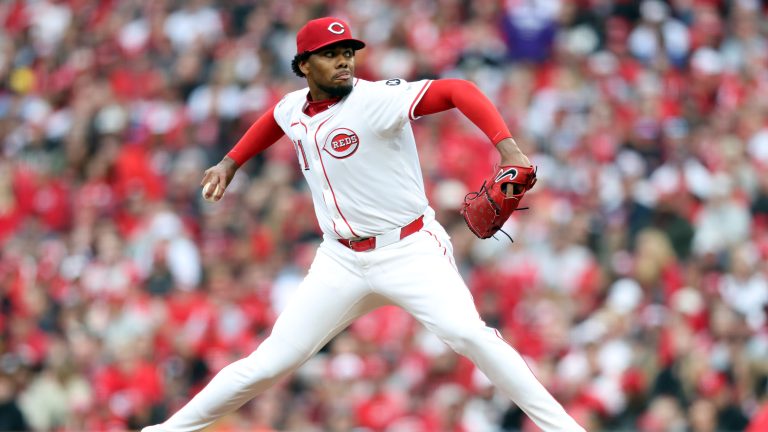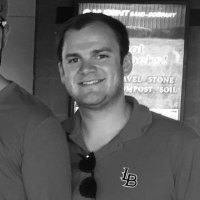Hunter Greene is the Best Priced Ace in All of Baseball
When Hunter Greene signed his extension with the Reds, he still had a lot to prove. Now, he is blossoming into a true ace and a real bargain.

As a teenager, he appeared on the cover of Sports Illustrated. As a prospect, he consistently ranked among the top 30 on every major prospect list. Now, at just 25 years old, Hunter Greene is establishing himself as a legitimate Cy Young contender.
However, despite his pre-draft hype, helium as a prospect, and fantastic 2024 season, Hunter Greene is still, somehow, underrated. There’s a bit of what I like to call “Josh Allen Scouting”.
If you remember evaluators having strong stances pre-draft and early on about Allen’s deficiencies and refusing to move off those priors, although Allen put them to rest?
A similar situation surrounded Hunter Greene and his lack of a diverse repertoire paired with a fastball that was “too straight”. A home run problem. A command problem. Or, was what we were seeing a developing pitching going through typical growing pains for someone his age?
Greene showed flashes of what made him special through his first two seasons and the Reds knew they needed to invest in him. Cincinnati saw the improvements Greene had made and his development trajectory and signed Greene to what is looking like one of the best deals in all of baseball.
Hunter Greene’s Now Bargain Contract
Let’s go back to April 2023. Greene was coming off of a rookie season with the Reds in which he pitched to a 4.44 ERA, allowed too many home runs, but also struck out 11.75 K/9. He had made four starts, including Opening Day, when news broke of a six-year, $53 million extension.
The deal would buy out all three arbitration years while giving the Reds up to two years of what would be free agent years. The 2029 club option for only $21 million does include a $2 million buyout.
| Year | Amount | Age |
| 2023 | $1 M | 23 |
| 2024 | $3 M | 24 |
| 2025 | $6 M | 25 |
| 2026 | $8 M | 26 |
| 2027 | $15 M | 27 |
| 2028 | $16 M | 28 |
| 2029 | $21 million (Club Option) | 29 |
For the Reds, they locked up a player they had already heavily invested in, developed, and saw the trajectory of his talent. For Greene, he secured generational wealth and can still hit the open market right around that sweet spot of 30 years old. Pitchers in that range are still young enough to land another long-term deal at a high dollar amount.
But, just how good is this deal for the Reds? Well, for starters, there are over 80 starting pitchers making more than Hunter Greene. His would-be arbitration years are very reasonably priced, even for a small market like Cincinnati to stomach, with no one year looking like it could be a worry.
The eventual jump to $15 million and beyond ages better and better with each day. Look around the league, and the price for starting pitchers. Alex Cobb, coming off a season missed to injury at 37 years old, landed a one-year $15 million deal. Bounce-back candidates are falling into the $17-21 million dollar range.
Arizona just signed Brandon Pfaadt to a similar deal as Greene – 5 years, $45 million with a $21 million club option. However, Pfaadt is two years older and doesn’t have the same level or upside, although he is very good. Boston’s Bryan Bello signed a six-year, $55 million contract with a $21 million club option, as well. Another case where I’d go with Greene.
The pitchers that fall more into the young proven ace category, such as Cole Ragans, Shane McClanahan, Logan Gilbert, and so on, either signed deals for arbitration years only or are hitting arbitration each season with the price going up.
For example, Logan Gilbert’s arb-1 year, this year, gives him a $7.6 million salary, and it will go up significantly over the next two seasons. Greene’s also two years younger than each of these pitchers.
Nothing is with 100% certainty, but I’m very confident that Hunter Greene is going to be a much better pitcher than the Alex Cobb’s of the world. Even if he takes a step back, the money will still be a bargain based solely off what the market has determined the cost for quality starters now is.
Of course, I think Greene’s value is much higher than what he is paid. If he hit the market this offseason, Greene likely would get $30+ million per season. Garrett Crochet had two years of arbitration left, and the Red Sox just handed him a six-year, $170 million extension.
Had Greene never signed his extension, he very well could have been in line for a similar payday, if not better if he actually reached free agency. Instead, he is locked into a team-friendly number to be the Reds’ ace for at least the next four seasons.
We know the value is in the Reds favor, but just how good can Hunter Greene be?
Greene is Pitching at a New Level
It takes a lot of pitchers until year three to really break out. Not only are they simply facing better competition, but they are learning how to get batters out when you cannot just overpower them. Working deeper into counts, tinkering with your pitch mix, making small adjustments until it clicks.
In 2024, things really started to click for Greene. His fastball showed better movement while still being in the upper 90s, leading to much better results on the pitch. Perhaps a bigger reason for his fastball success was improvements to his slider, which also saw increased movement and better results.
When Greene is able to work those two pitches off each other, both benefit. With his slider gaining more horizontal movement, it became harder to square up, and batters saw a 10% decrease in hard-hit rate. Because of his slider, Greene’s fastball played up as batters had to wait a split second longer to identify the pitch, and at that point, it was too late.
Mixing these two pitches with a curveball and split finger helped to keep hitters off balance all season. That home run problem Greene had?
It continued to improve, and Greene dropped his 14.3% home run to fly ball ratio to 6.9% in 2024. Batters were not making the same loud contact, and a drop of three miles per hour in average exit velocity led to batters cutting their barrel rate nearly in half from 2023 to 2024.
Although the sample size for 2025 is only three starts, what we have seen from Greene gets me excited.
| Innings | Hits | ER | BB | K | HR | Strike % |
| 5.0 | 3 | 2 | 1 | 8 | 1 | 59% |
| 7.0 | 3 | 1 | 1 | 8 | 0 | 74% |
| 8.2 | 4 | 0 | 1 | 7 | 0 | 79% |
Greene is working deeper into games thanks to improved command, but is not sacrificing strikeouts. He’s attacking hitters and challenging them in the zone while his pitch movement helps miss bats. The amount of uncompetitive pitches has decreased and we are seeing the most complete version of Greene that has ever thrown a baseball.
Oh yeah, this isn’t picking on some low-end teams. The San Francisco Giants twice and Texas Rangers. Facing the same team twice in the first couple of weeks was not a disadvantage for Greene. On the road in San Francisco on Monday night, he was one out away from a complete game.
A game where I think we saw the best Hunter Greene has ever pitched. Greene forced 11 whiffs on 15 sliders, touched 20 inches of induced vertical break on his fastball, and was painting the black at 99 miles per hour.
He worked through the Giants’ order like it was no problem at all, and you could see him pitching in a way that looked different. More complete and confident in his offerings and not afraid to throw them in locations he did not seem to trust in the past.
The poise we have seen early in 2025, combined with the improved command, gives me sky-high hopes for Greene. He’s solidified himself as a true ace and leader of this team. If he’s able to hit his spots with the consistency he’s shown, watch out.
Final Thoughts
Although the Reds have not had much success with contracts, this is definitely one for the win column. If they did not ink the deal when they did, there would be constant talk about potentially trading Greene before free agency. Instead, they have a front-line starter who continues to grow as a pitcher and as a leader.
When you think of what it takes to make a playoff-caliber team, a true ace is perhaps at the top of that list. A pitcher you can count on every fifth day and one you trust to give the ball to in October. Greene has blossomed into just that.
Part of signing a player is what they bring to the clubhouse. Investing in Greene was an easy decision for Cincinnati because they had no reservations about what kind of person he is. Incredibly well-spoken and thoughtful, invests time and money into the community, and is starting to really step up as the leader of the team.
Getting a great player is one thing, but combining that with a great person? Jackpot.

